
As the Audi RS4 Avant prepares for life as a plug-in RS5 wagon, so the run-out Edition 25 Years feels increasingly appropriate. The original model swaggered into the 21st century with a twin-turbo V6 of less than 3.0 litres, was offered only as a compact estate, and looked the absolute business in Imola Yellow. With concern brewing over what an electrified future looks like for the Audi Sport icons – see the response and reception to stuff like the C63 and M5 – so there’s something comforting about a familiar shape and familiar spec, and a much-loved colour. Rewriting the rulebook can wait until at least 2025 – it’s time now for a nostalgia trip.
Any reservations, however legitimate, that linger around this B9 generation of RS4 are pretty easy to dismiss when presented with Imola Yellow, a rude ride height and some snazzy wheels. The opportunity to drive the new model comes with a chance to poke around the car that inspired it as well. While the B9 will never be revered quite like the B5, it’s hard not to look at a pair of small, smart estates that sits perfectly on their wheels, fill out their arches, burp out of chunky exhausts, share a badge and a remit and a colour – and not be impressed. It’s all just very fitting, the great-grandchild finally done good after years of not quite living up to the expectations of a legacy. Yes – Imola Yellow leaves quite an impression.
It’s certainly welcome after the black-is-the-new-black approach for last year’s Competition with which the 25 Years share a lot of vital bits. The carbon backed seats for this model feel really special, too (the Comp featured just RS Sports seats), as does the contrast stitching and the subtle limited edition engraving. White-backed digital dials like it’s an RS2 is a neat touch. You’ll really have to love RS4s (and yellow) for the overhaul to be properly persuasive – although, at this money, it’s really only going to be dyed-in-the-wool enthusiasts that are going to apply. They’ll likely be impressed enough, even if it remains a shame that the additional 25 Years paraphernalia – the Alcantara wheel, driving gloves, the watch – won’t be offered to UK customers. Those paying more than £100k for an RS4 ought to be treated like royalty, so it seems a shame that the full red carpet (or Imola Yellow, perhaps) treatment isn’t being applied.
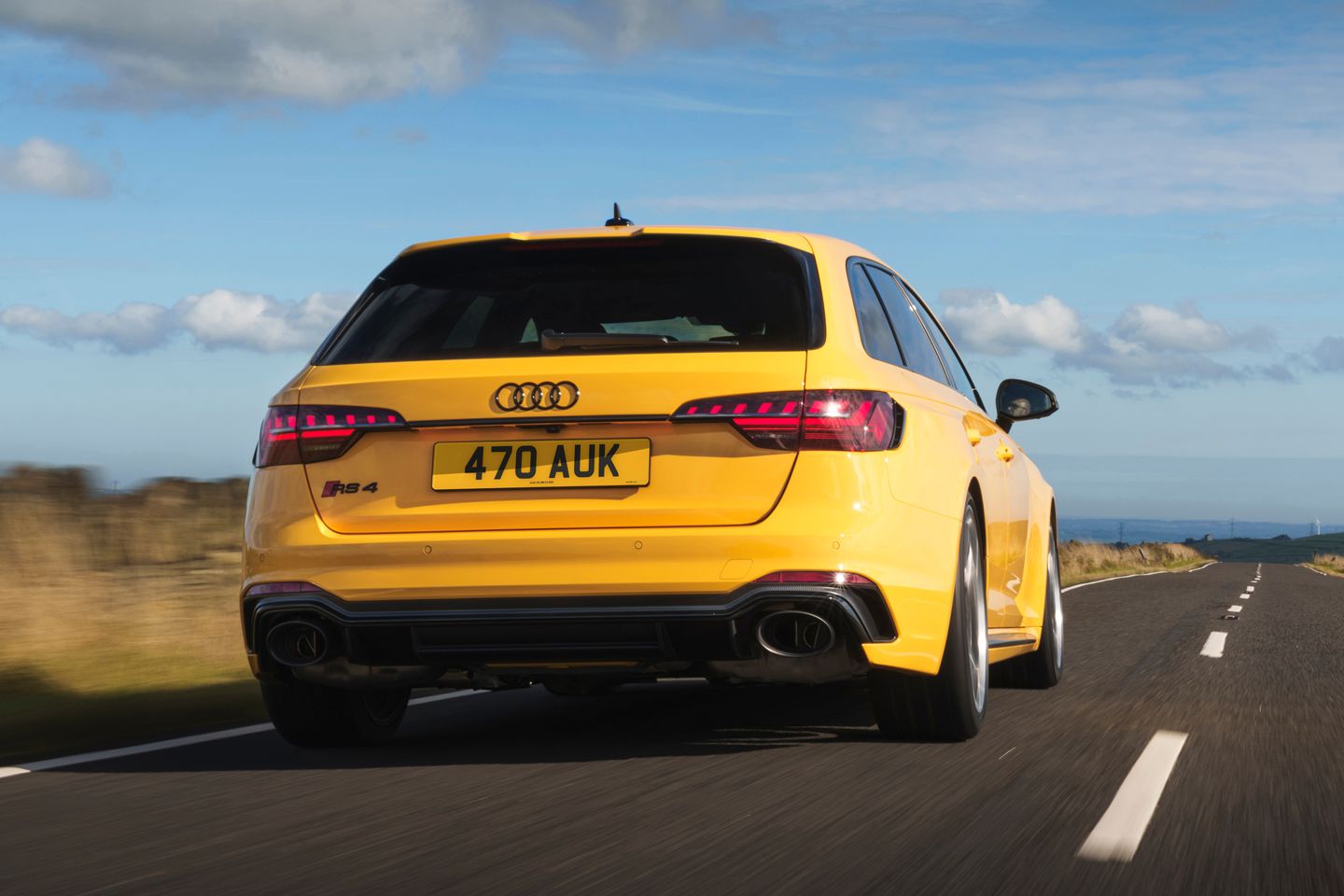
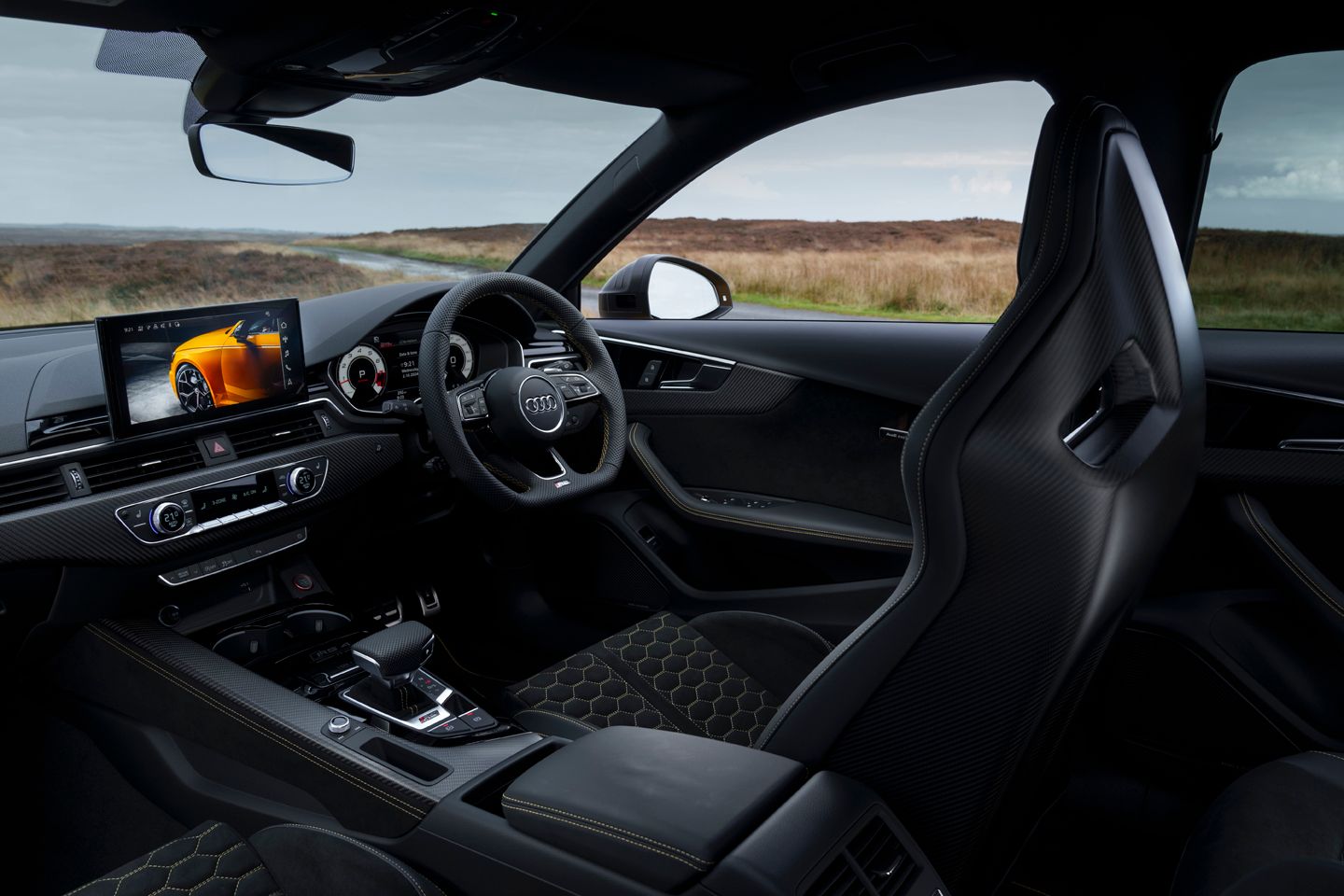
While the 25 Years shares some bits with the Competition – the RS sports suspension pro coilovers, the revised sport diff, snappier gearchanges – the two aren’t identical. The yellow car gets another 20hp for starters, meaning 470hp in total, as well as standard ceramic brakes (optional on the Comp), and the intriguing inclusion, exclusive to this model, of an additional two degrees of negative camber on the front axle. Which isn’t nothing. In cahoots with stiffer control arms and a new rear subframe, Audi promises ‘more precise suspension feedback and better overall performance.’
Certainly the 25 Years doesn’t pull any punches at low speed, even a mid-way setting for the suspension is pretty stern in its damping when tasked with manhole covers and the like. But tied-down tautness is preferable to hollow, flimsiness that masquerades as comfy until the first real test. This car, as with the Comp, outlines its intentions from the off in a way that the aloof standard RS4 never did: the growl of the V6, the tension of the ride, and the rasp of the gearshifts all communicate a good deal of intent. Which is welcome.
Sadly there’s not a Competition to compare to the 25 Years, though certainly they both offer up a more engaging drive than the base model. The old black car did without the negative camber; from what can be gleaned, it seems that this one does without the fixed steering ratio of before. That would seem an odd omission, though whatever the case some tweaked hardware (and Pirelli P Zero Corsas) certainly make for a more positive, keener front end here than stock. You know exactly where that custard coloured snout is going as soon as lock is applied, which wasn’t always the case with the RS4. Just don’t expect night and day difference from a Competition.
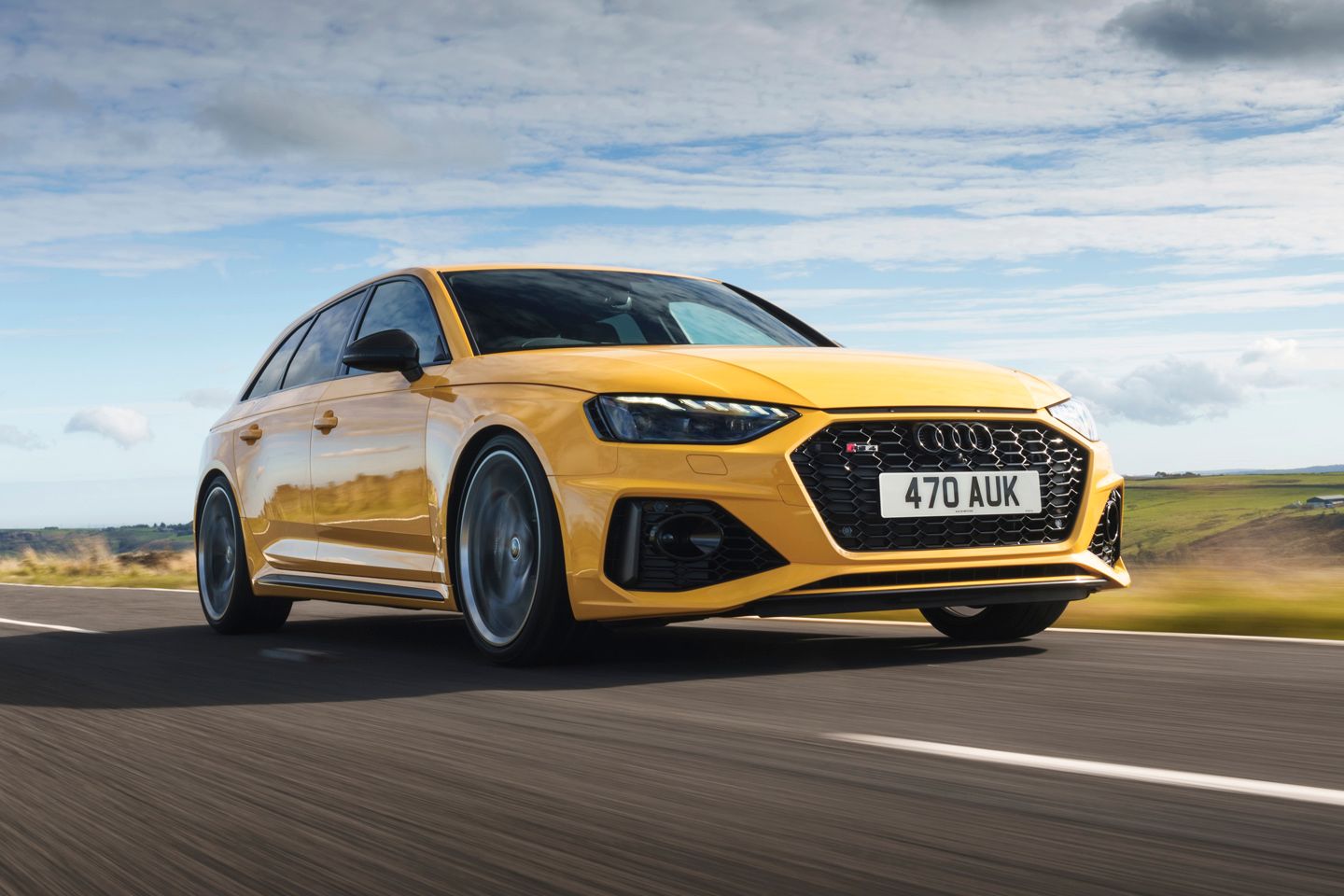
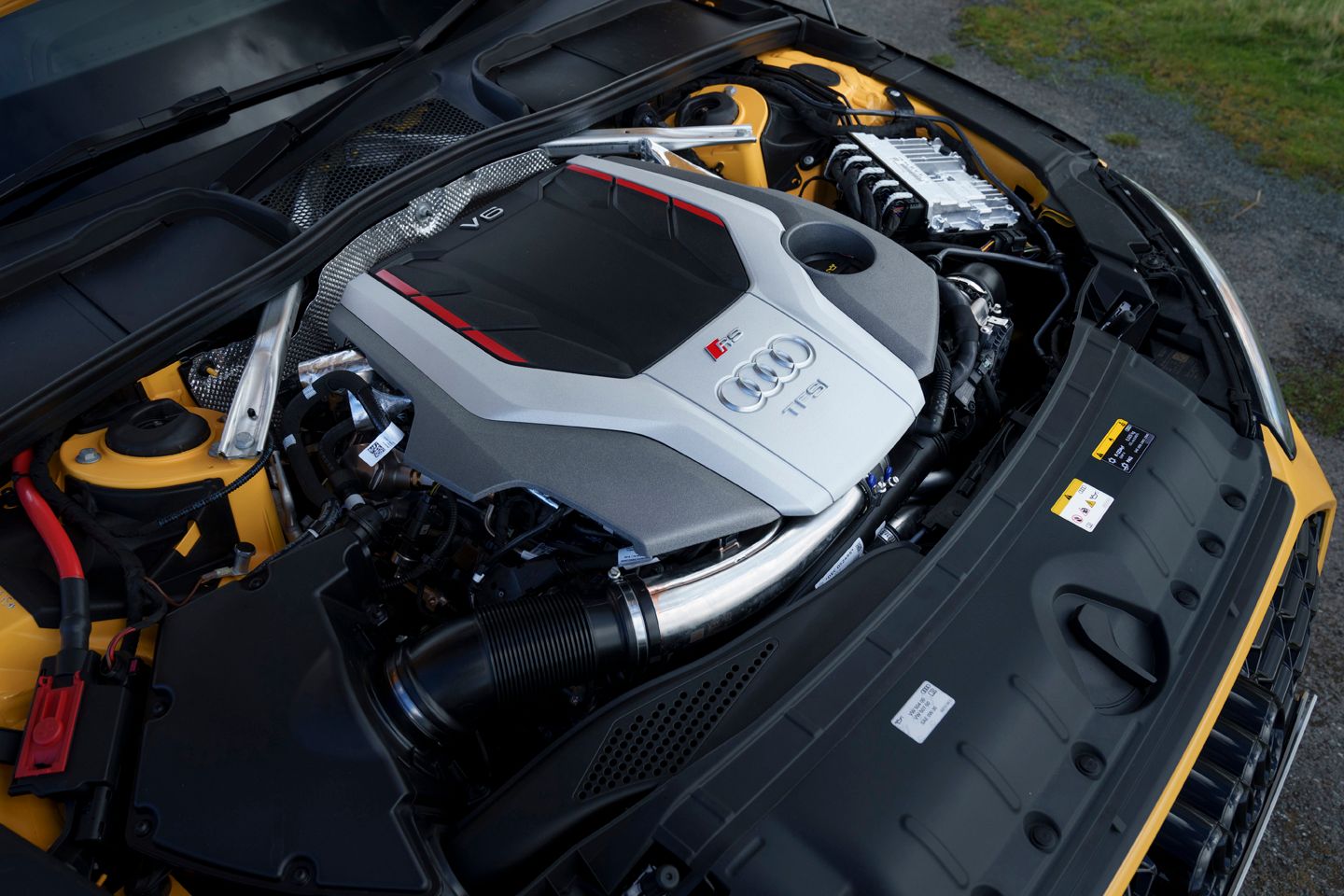
Similarly, another 20hp obviously does not elevate the 25 Years onto another plane of performance. It’s probably the nicest installation of this engine yet, however (if that doesn’t sound like faint praise) sounding angry and purposeful through the RS sports exhaust. Truth be told it’s nice to drive a performance car in 2024 not so ludicrously potent that it feels dangerous to accelerate for more than two seconds (this being the first RS4 capable of 300kph, or 186mph, from the factory). The 25 Years growls and barks with the sort of authenticity we always hoped this layout would, with an auto that’s a proper accompaniment now as well. Sort of a shame that this sector does twin turbo sixes and eight speed autos so well, or this might stand out as something more remarkable.
Ultimately the 25 Years remains as satisfying to drive as the Competition was, with purpose and resolve and a feeling that the driver is being encouraged to have their say on proceedings. The brake feel from the standard ceramics is really good, the willingness of both axles – the front to dive for an apex, the rear to power out – and the steeliness of the damping effort once more makes for an RS4 that will reward driving fast rather than merely tolerate it. An M3 Touring will still deliver a greater thrill, be in no doubt, but the fact that there are folk in Audi Sport who can make an Imola Yellow purse from a sow’s ear (a slight exaggeration; you get the point) does bode well for what’s coming next.
Indeed, the relative age of the base platform – this RS4 first being introduced at the end of 2017 – already serves up some advantages for the 25. It feels small, even compared to the BMW, perfect for all weathers on any road; a clear set of dials and small screen between them feels nicer than a bamboozling head-up display; the buttons on the wheel make sense; there’s a gearlever, and so on. It isn’t just those elements of the package evoking 2001 that make you yearn for the recent past, basically. Turns out 2017 wasn’t so bad, either.
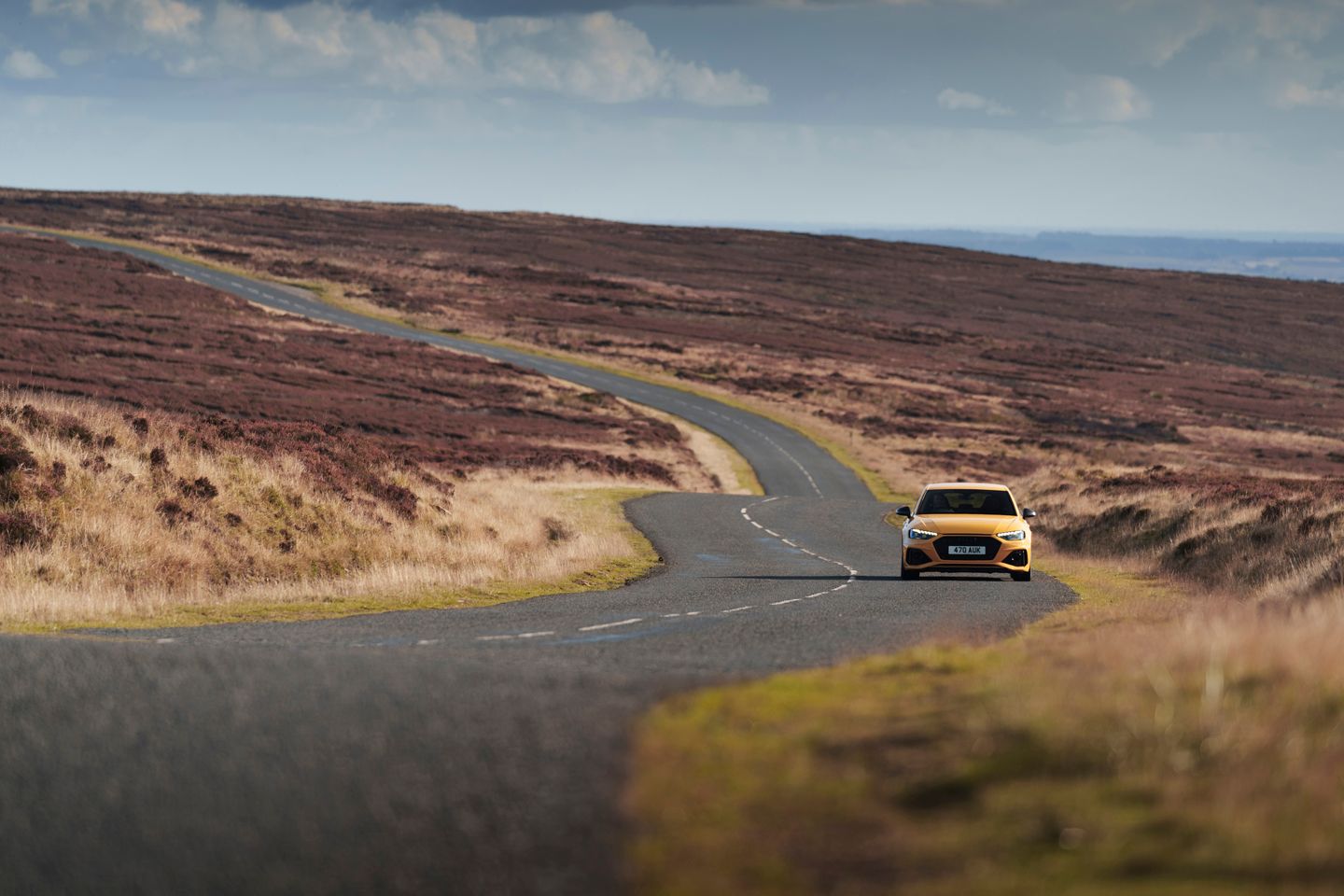
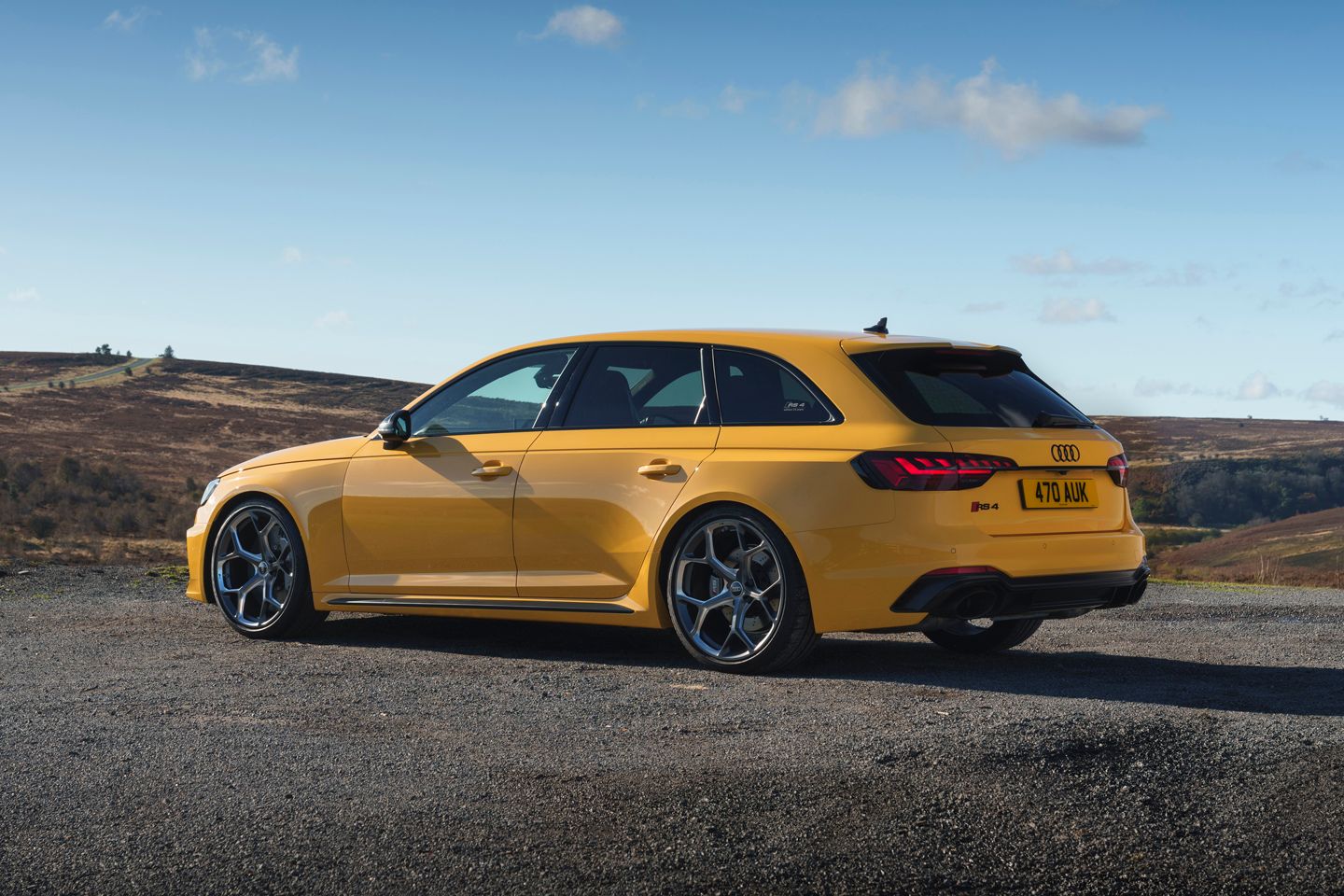
However likeable the 25 Years remains, though – and it’s probably the best this generation has been – there really is no escaping the incredible premium being asked. UK buyers are also offered grey or black for less money, although that feels like having a wedding dress that isn’t white to save a few quid. Not the time. But for an Imola Yellow 25 Years Edition, Audi asks £119,180. Where the 60-unit RS6 GT allocation (at much more money) is sold out, around half of our 50 cars remain unspoken for. Because, frankly, it looks a tough sell.
There were just 75 Competitions sold here, remember (and 10 per cent of them are currently on PH), so that’s a very rare and very good RS4 of this generation that can be bought very lightly used for £70k or so. An M3 Touring is less than £90,000, so it must be possible to have that in a BMW Individual Yellow – Neon, Atacama, Dakar, Speed – for a little bit extra. Unlike models including the R8 GT and to a slightly lesser extent the RS6 GT also, the RS4 doesn’t quite do enough to justify either its premium or end-of-an-era billing. But to sit alongside a B5 of an identical colour in the collection, while being better to drive than it probably ever needed to be, the Edition 25 Years will do the job perfectly.
SPECIFICATION | 2024 AUDI RS4 EDITION 25 YEARS
Engine: 2,894cc, twin-turbo V6
Transmission: 8-speed automatic, four-wheel drive
Power (hp): 470@5,700-6,700rpm
Torque (lb ft): 443@1,900-5,000rpm
0-62mph: 3.7sec
Top speed: 186mph
Weight: 1,790kg (including 75kg driver, standard car)
MPG: 28.8 (standard car)
CO2: 227g/km
Price: £119,180 (Imola Yellow; Nardo Grey £115,880, Mythos Black £116,555)

